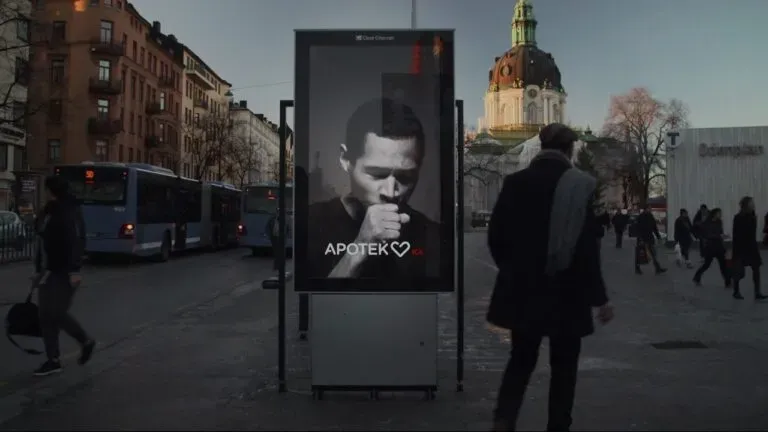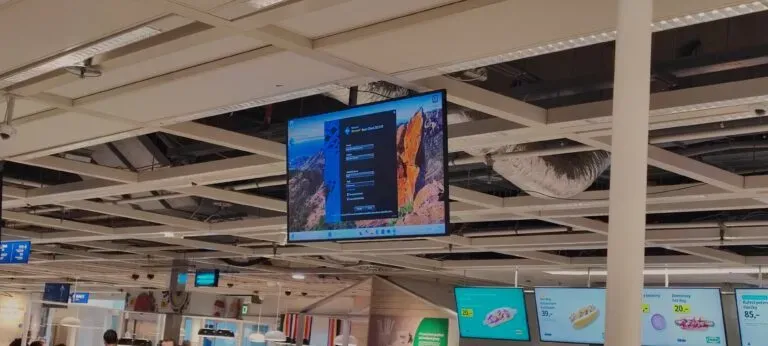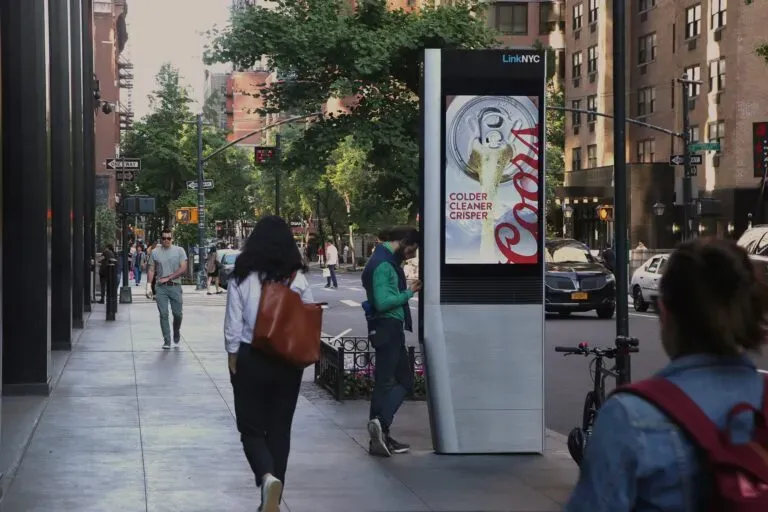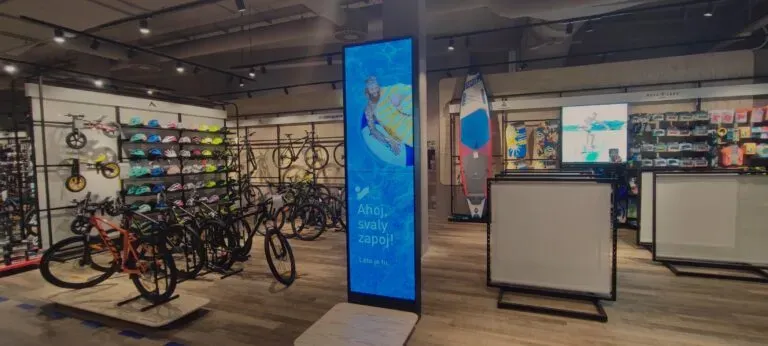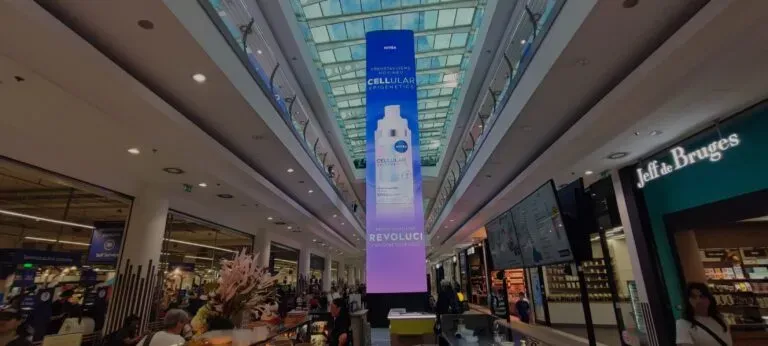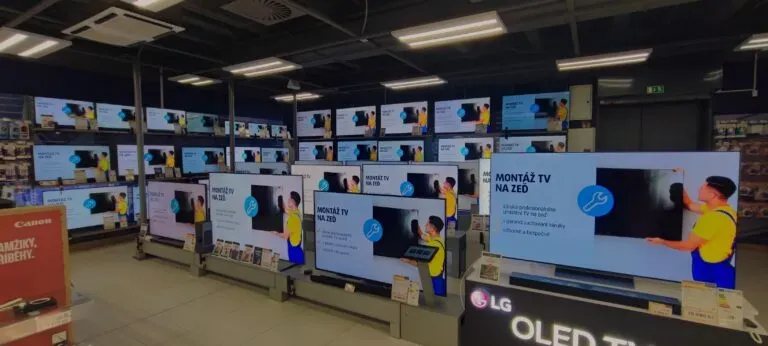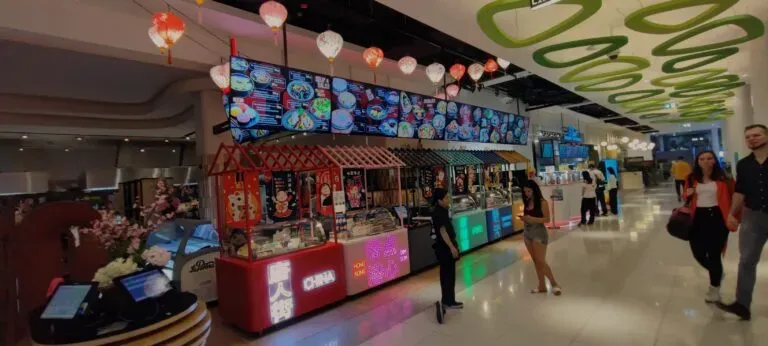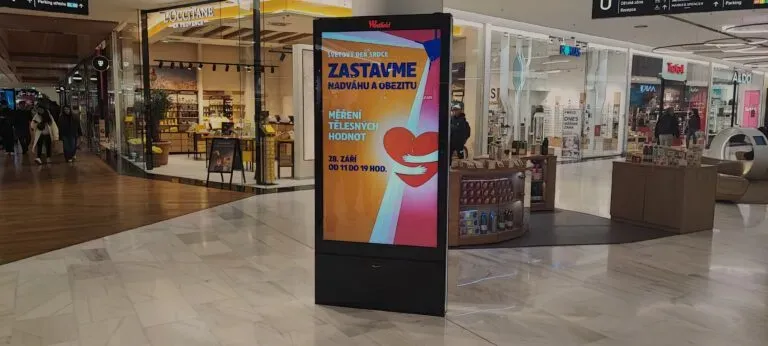Advantages and limitations of DOOH (digital out-of-home advertising) in 2025
Digital out-of-home advertising (DOOH) is a modern form of outdoor communication.
Advertisers actively use digital technologies to display dynamic content on screens for advertising in various formats. Unlike traditional billboards, DOOH combines media, technology, and analytics, creating more interactive and appealing campaigns. In a world where the consumer lives among screens, such solutions allow brands to be closer to their audience and ensure an effective presence in the urban environment.
DOOH software is becoming the main tool for managing content and automating advertising campaigns. It allows centralized updating of materials, scheduling display times, and conducting analytics of ad placement effectiveness. This makes digital platforms not only flexible but also economically beneficial for businesses of any scale.
Advantages of out-of-home advertising
Scalability and accessibility
DOOH networks cover millions of people daily — from public transport passengers to shopping mall visitors. This advertising format does not require the involvement of users in a specific space: it is enough just to be near the screen to see the brand’s message. Thanks to this, audience reach is much broader than on most online platforms. Digital out-of-home advertising can operate around the clock, ensuring constant contact with the consumer — regardless of time and weather conditions.
Precise audience targeting
Digital technologies make it possible to apply smart algorithms that select advertising content depending on the time of day, location, or type of audience. For example, in office areas, business offers can be shown, while near educational institutions — ads for educational services or mobile applications. This approach significantly increases the relevance and profitability of campaigns. Thanks to this, DOOH software allows advertisers to achieve maximum precision when interacting with the target audience.
Flexibility and promptness
One of the greatest advantages of DOOH is the ability to instantly change content. The use of software allows updating messages in real time, responding to weather conditions, news, or festive events. Because of this, a brand can remain relevant and maintain constant contact with its audience. Moreover, networks can quickly adapt ad campaigns according to user reaction analytics to increase advertising effectiveness.
Interactivity and creativity
Modern advertising screens support high-quality video, augmented reality, as well as interactive elements — for example, QR codes or motion recognition functions. This helps not just to show advertising but to create an emotional experience that increases viewer engagement. Thanks to the use of the latest technologies, digital out-of-home advertising opens new opportunities for brands that strive to remain relevant and innovative.
Interaction with the environment
LED video walls broadcast content that changes depending on weather, time, or general surroundings. Software for LED screens helps to update information automatically, making advertising relevant. SSP and DSP for DOOH provide the ability to precisely control displays, optimizing campaigns. The use of modern systems gives a brand flexibility in working with external triggers. Such an approach allows advertisers to respond quickly to environmental changes and adapt their marketing strategy.
Emotional connection
Digital advertising allows communication with the audience in places where people are every day — transport, city squares, shopping centers. A digital signage player ensures a personalized approach, allowing advertising messages to change for specific viewers. Programmatic helps make the displays relevant, and software for LED screens allows integrating creative formats to enhance emotional involvement. This stimulates the formation of a long-term positive impression of the brand among city residents.
Unmatched spectacle
LED video walls in the city create an effect of presence thanks to bright videos and rich colors. SSP and DSP for DOOH allow automating the selection of content for display according to audience interests. Software for LED screens helps to create dynamic video clips that remain memorable for a long time. Thanks to innovations, it is possible to implement original campaigns that make the brand stand out among competitors.
Integration into the urban environment
Digital solutions — a digital signage player and software for LED screens — organically integrate advertising into the architecture of the city. SSP and DSP for DOOH allow effective management of all brand campaigns. Programmatic maintains a dynamic communication style, ensuring the relevance and closeness of advertising messages to the urban audience. Such integration of advertising technologies strengthens the brand’s position in the modern urban space.
Limitations of out-of-home advertising
The necessity to comply with regulatory acts
Digital advertising, including programmatic and digital signage, falls under the jurisdiction of state and local regulatory acts. Not all LED billboards or digital signage players can be installed in any location, so before launching a campaign it is necessary to consider requirements regarding placement and appearance. This can become a barrier to project implementation, especially in historical or densely populated areas of the city.
Complexity of measuring effectiveness
Ordinary analytics tools are not always able to correctly assess the return from digital signage or LED billboards. Programmatic requires specialized monitoring systems that take into account display time, audience, and geolocation. The absence of convenient metrics can complicate the comparison of results with other types of outdoor advertising, therefore advertisers should invest in modern analytical platforms.
High cost of implementation
Creating a digital infrastructure for DOOH, such as LED billboards and digital signage players, requires significant financial investment. Programmatic demands quality equipment and constant technical maintenance, which can limit access to this format for smaller enterprises. At the same time, the modern industry is gradually offering solutions for leasing digital screens and flexible pricing models, expanding opportunities for businesses of various scales.
The danger of information overload
Excessive use of advertising in urban locations can cause oversaturation with information. When branding in a campaign is placed without careful analysis, the central messages get lost among many other signals. For effective campaigns, it is important to use a centralized video management system to control the frequency and relevance of contacts. The Supply-Side Platform allows optimization of ad impulse distribution, maintaining a balance between brand presence and perception quality.
Vulnerability to external factors
DOOH advertising strongly depends on weather conditions, city lighting, and infrastructure features. The Supply-Side Platform makes it possible to carefully choose locations where the likelihood of negative environmental influence is minimal. The centralized video management system helps maintain stable broadcast quality even under unfavorable factors. Branding in a campaign must take into account seasonality, traffic intensity, and urban surroundings for a positive effect.
The problem of superficial perception
Messages created for a broad audience sometimes lose depth and emotionality, becoming typical of mass campaigns. DOOH advertising requires personalization of content since narrow segments may ignore universal appeals. The use of a Supply-Side Platform allows for more precise segmentation and content management. The centralized video management system is a key tool for adjusting personalized messages for different audiences.
A solid conclusion can be drawn that advertising is a powerful tool for building brand image and increasing recognition. However, despite numerous advantages, it is worth carefully considering the limitations caused by local legislation and audience expectations. Branding in a campaign gains maximum value only thanks to a well-thought-out strategy and consideration of environmental specifics. The use of modern platforms makes DOOH a key element of successful marketing.
Advision is a content management system for remote control, media planning of video and audio content broadcasting, and a supply-side platform for monetising advertising time. We also implement a Wi-Fi tracking system to measure quantitative indicators of the advertising audience. We help Digital Signage owners and DOOH advertising operators earn money from advertising, automate work processes, and build a reliable media infrastructure using AdTech and MarTech software solutions.
Contact us if you want to increase your profits and implement the latest technologies to solve your problems!
Share the news












